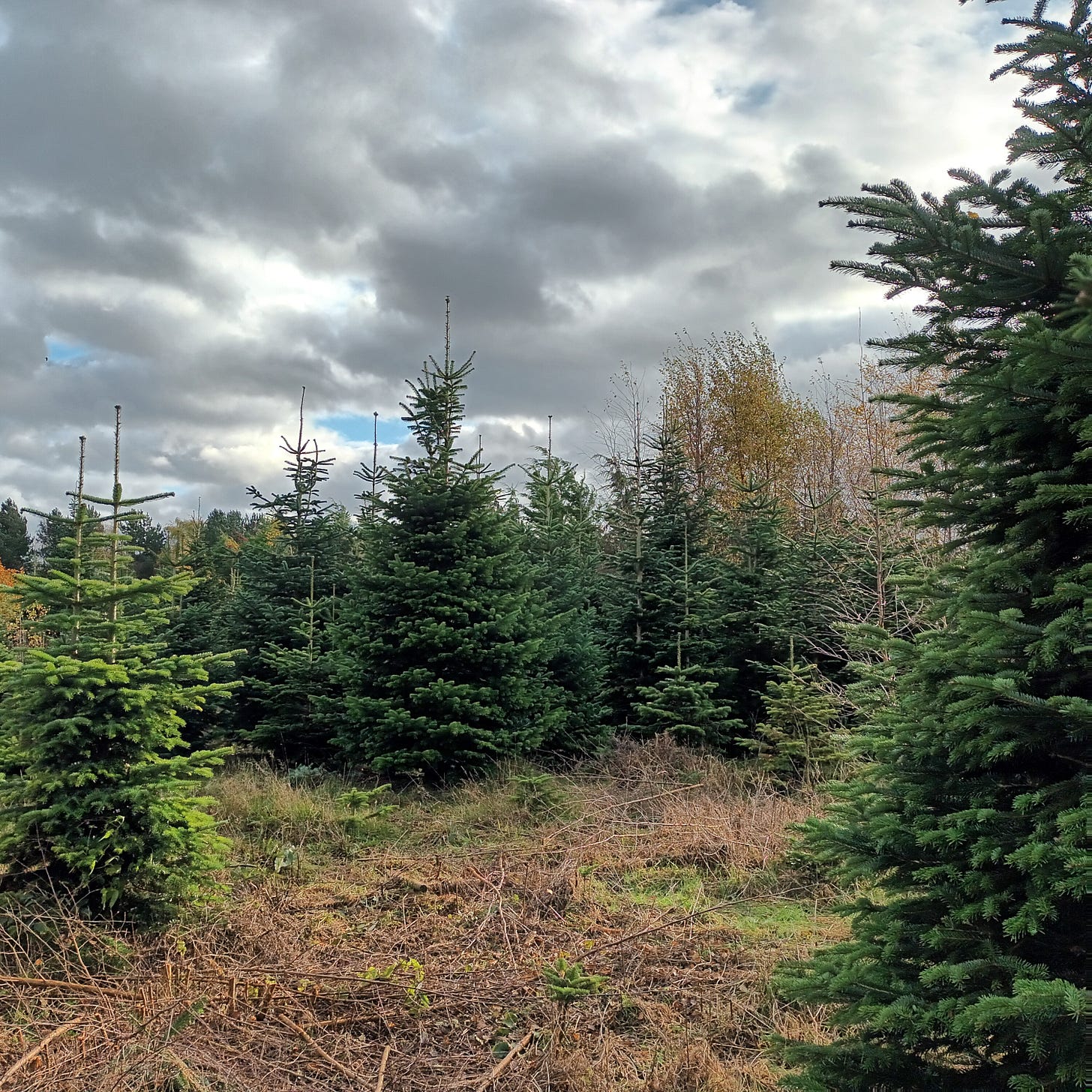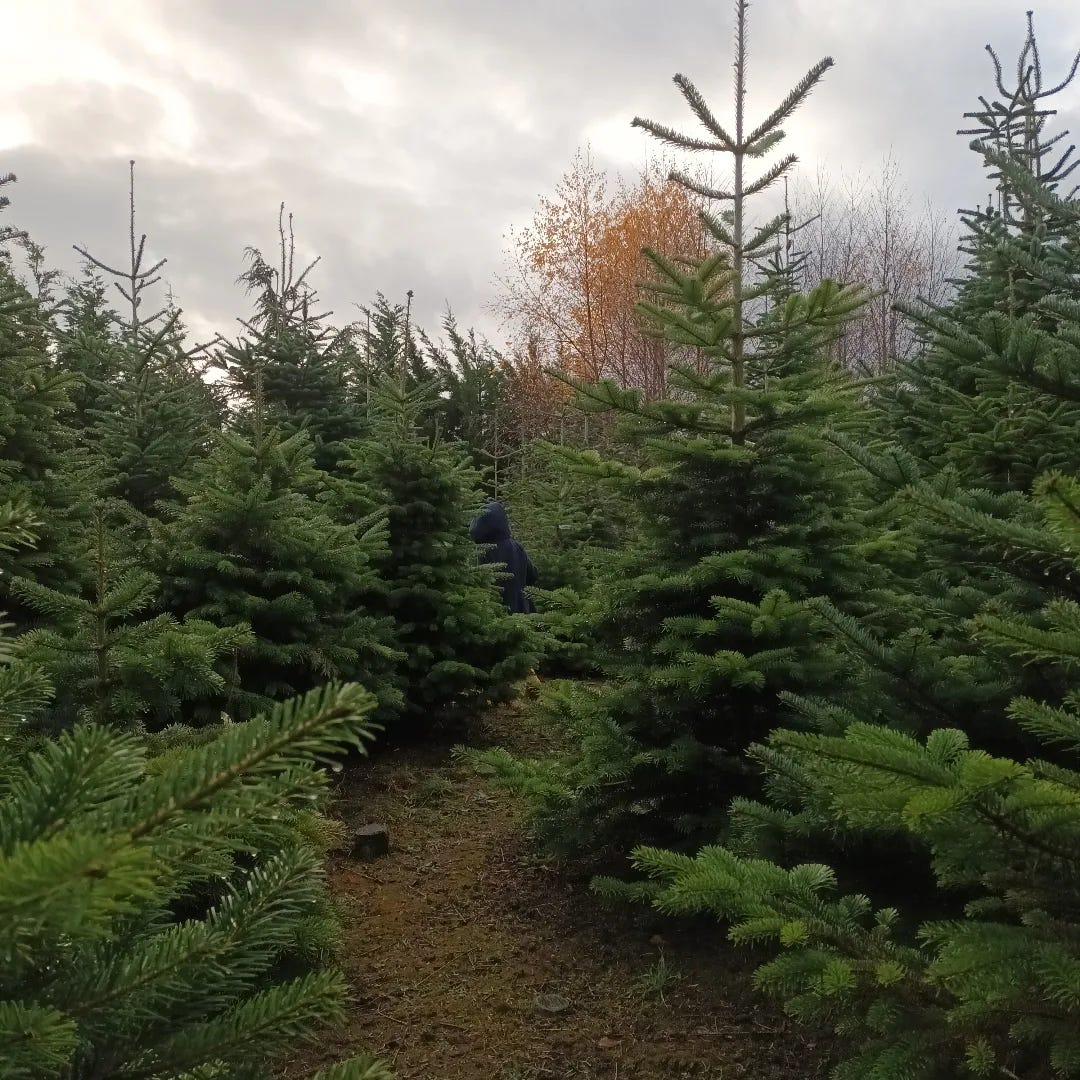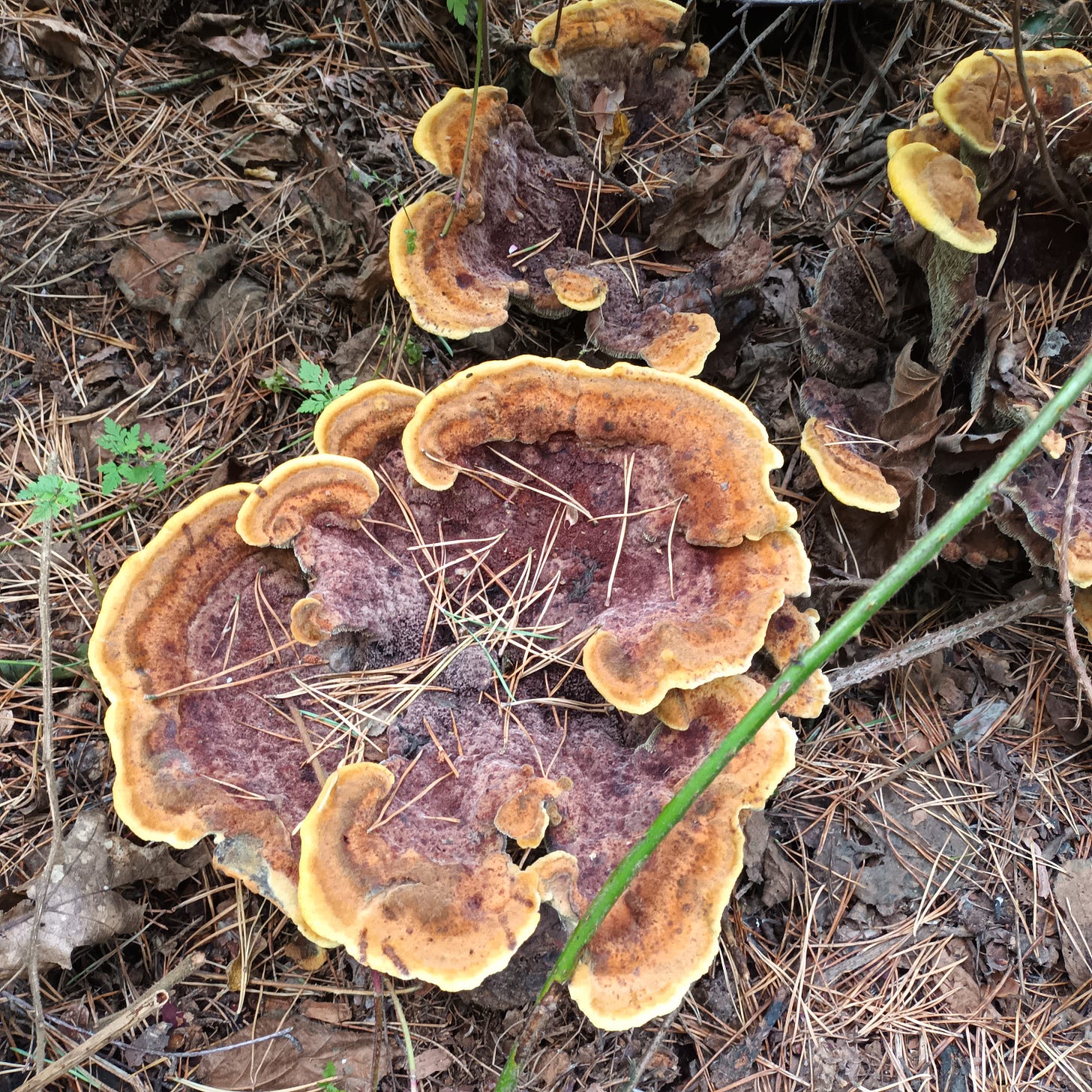Silent Speech: Pine Trees, Fairytale Woods and Mushroom Roots
Today we were working in the Christmas tree fields at the nursery. If you are picturing a Christmas tree plantation, you probably imagine regimented rows of rather sad little trees planted into orderly grids of weed-free earth, ready to be chopped down in December. This is doubtless an efficient way to grow a crop, but it is absolutely not what our Christmas tree plantation looks like.
On a late October morning, the sun catches through the leaves on the birch trees that have self-seeded in amongst the pines. There are birds everywhere - robins already belting out their territory-claiming songs; wrens hopping about in the branches, and blackbirds just over the fence in the fruit tree section, fighting over the last of the dropped apples and pears. The trees themselves are a maze of meandering paths where a child could get lost, with hummocks of overgrown grass and foot-catching stumps where older trees have been felled. They range in size from tiny two-foot-high saplings (one, incongruously, full of equally tiny dark brown cones) to huge, towering specimens that might go to stand in the hallway at nearby Castle Howard.
We were shattering the peace, as we cut down trees that had grown too close, pruned the rest into shape, and dragged out piles and piles of logs and needles over the uneven damp ground. Underfoot, the rotting stumps and long grass had created perfect conditions for fungi. Bright, crimson fairytale mushrooms sprouted everywhere. Amanita muscaria or fly agaric is one of the fungi that exists in a symbiotic relationship with pine trees. The roots of the fungi (mycorrhiza) supply the pine roots with nutrients, and receive sugars in return. This system is part of what the scientist Dr Suzanne Simard has enticingly named the ‘wood wide web’: a system which, she claims, allows trees to communicate using the filaments of fungal mycelium to transmit something akin to messages.
According to this theory, as we tramped back and forth, dragging our piles of branches, the silent ground beneath our feet was filled with a buzzing exchange of information running along those root systems, expressing itself in pine-sap sweetness and rich fungal nutrients. It’s a hugely popular idea: trees use fungi to communicate, and in doing so, create a community with one another. Writers such as Merlin Sheldrake and Rob Macfarlane create vivid images of scientists straining to decode these mycorrhizal messages, to hear what the trees are saying.
But the idea is also controversial. Critics of the ‘wood wide web’ have pointed out that it’s not clear how these networks between trees function (if they function as networks at all). Others have pointed out that the idea of trees ‘communicating’ taps into our human-centric perspective, making it all too easy to reduce the huge complexity of non-human organisms to familiar, sentimental soundbites.
For our purposes in the nursery, the mycorrhizal fungi make the pine trees grow more quickly and healthily. They look amazing and they support a huge ecosystem of other plants and animals, but they are entirely practical, requiring no other justification. As we finished work as the sky turned pink. The birds that had been scolding us fell silent, and the pine trees became dark silhouettes against the fading light. We finished stacking the birch logs, and left the trees to wait for Christmas.








